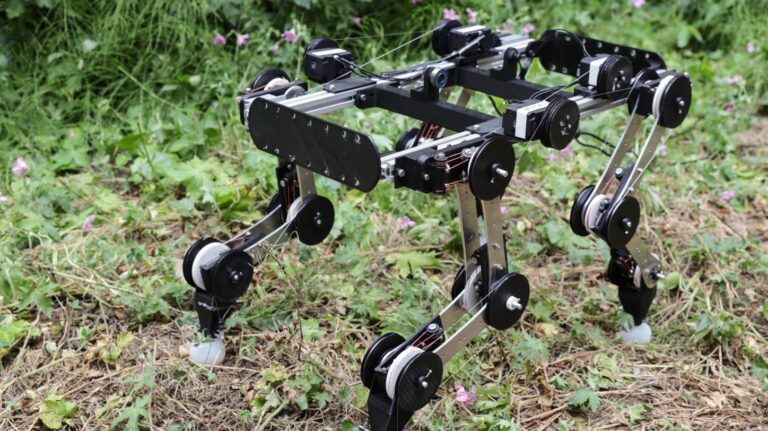Roboticists at École Polytechnique Fédérale de Lausanne’s (EPFL) Computational Robot Design & Fabrication Lab (CREATE), have used motion-capture data from real dogs running to build a robotic quadruped that can run autonomously, once it has been set in motion.
From this point onwards, the dog can run without its motors being activated.
Mickaël Achkar, the master’s student who built the robot, said: “I wanted to engineer a robot with animal characteristics, bearing in mind that animals – like humans – move in a huge variety of ways.
“But most of these movements are executed by just a few joints.”
Achkar selected a dog as the model for the bot, based on the large amount of open-source data available on the motion of dogs.
His quadruped was designed to have bilateral symmetry, meaning each of the robot’s four legs has three joints, and each joint is coordinated with the others. According to an EPFL, this means Achkar’s robot to run in a manner that mimics a real dog.
The prototype was built with metal rods acting as the bones, 3D-printed pulleys as the joints and thin cables as the tendons; several screws were used to hold it all together.
A treadmill was acquired to test the robot dog, which led to the discovery that the robot could run autonomously once it ‘got going’.
“At first we thought it might’ve been a fluke,” added Achkar. “So we changed the design slightly and tested the robot again – and it couldn’t run anymore.”
The team did end up adding a counterweight, similar to a pendulum, so that the robot could stay in motion once it started.
Francesco Stella, a PhD student at CREATE and project supervisor, cotinued: “We designed the robot’s body to be able to respond automatically, much like a trout starts swimming automatically when placed in water.”
The robot’s control motors are useful for achieving a broader range of motion, according to the research team.
For instance, the quadruped can jump and overcome obstacles without the support of the counterweight. “We’d like to push our design further with the motors, but for now the prototype isn’t very robust,” added Achkar.
However, further testing on the treadmill showed that the dog could reach speeds of up to six km/h.
“Our goal isn’t to compete with ultra-high-tech robotic dogs, but rather to explore bio-inspired robot designs,” said Achkar.









